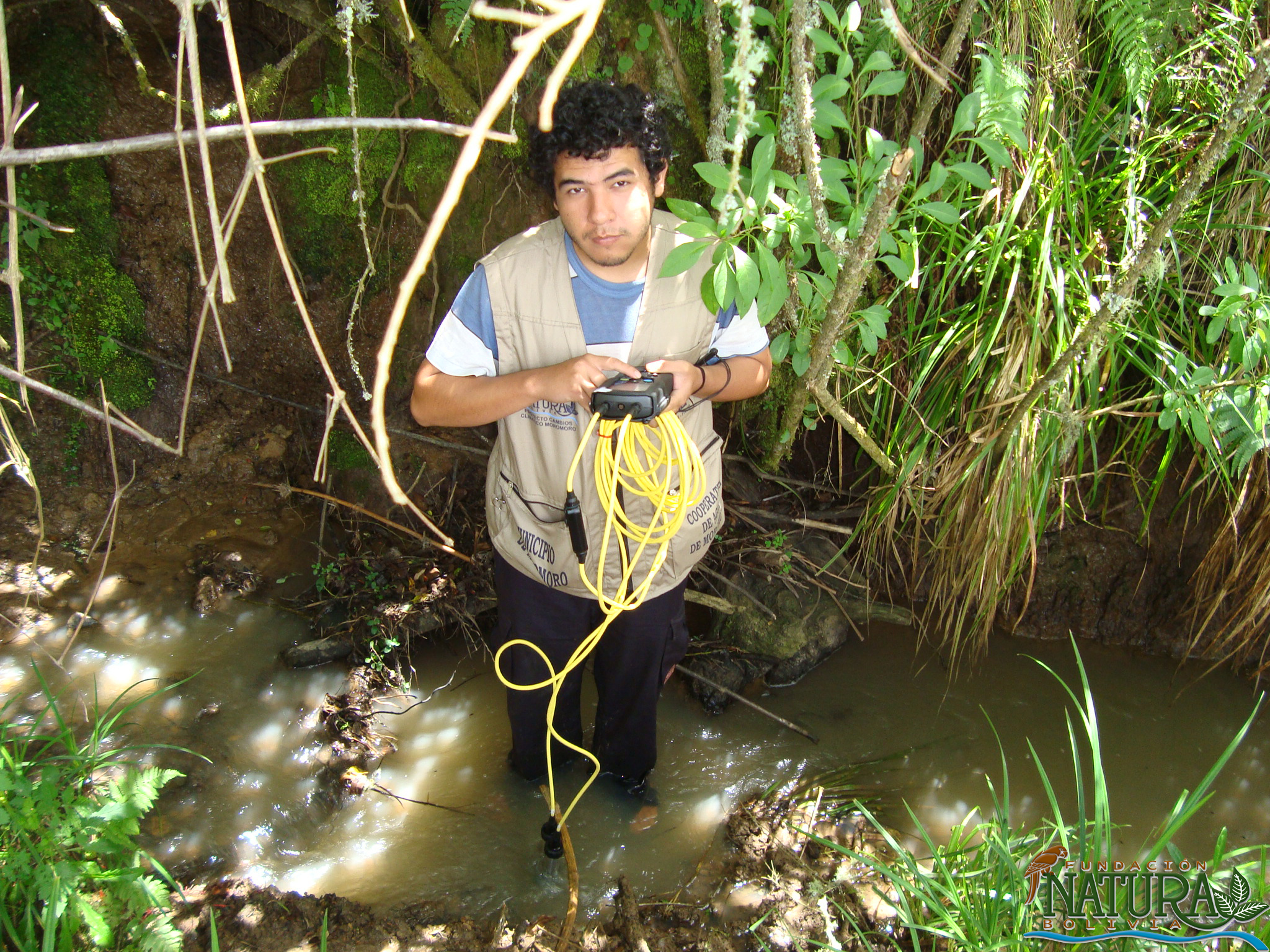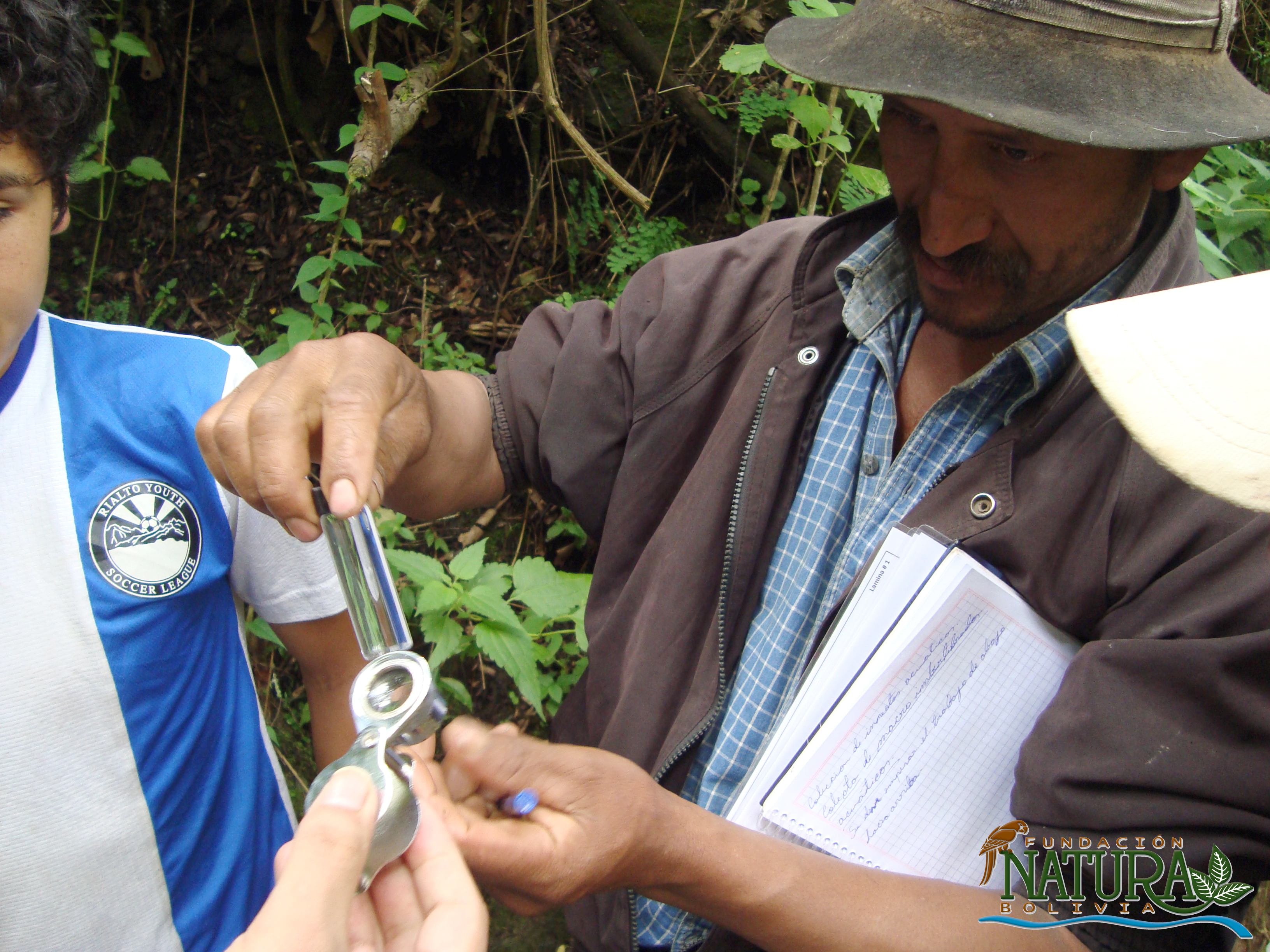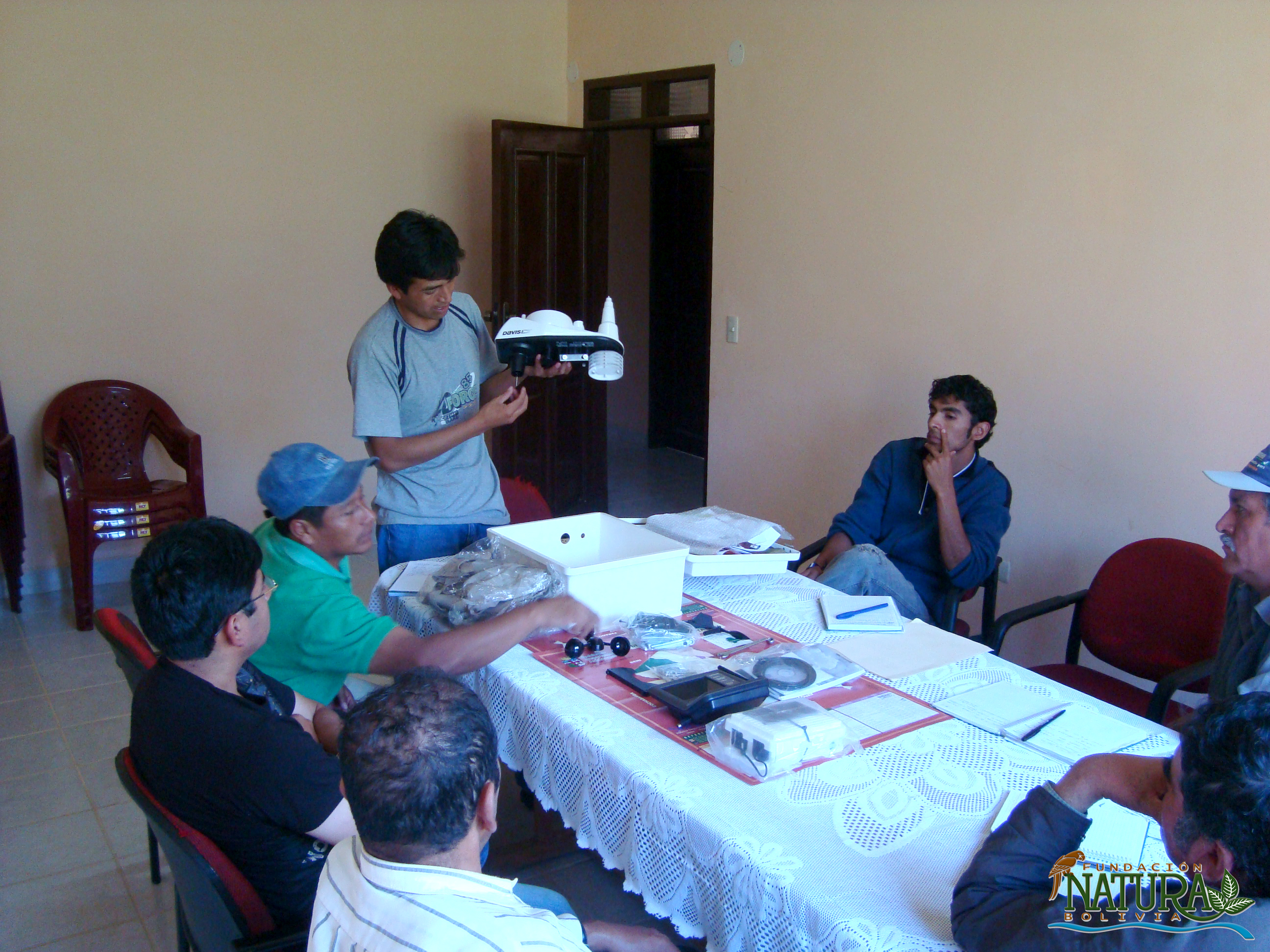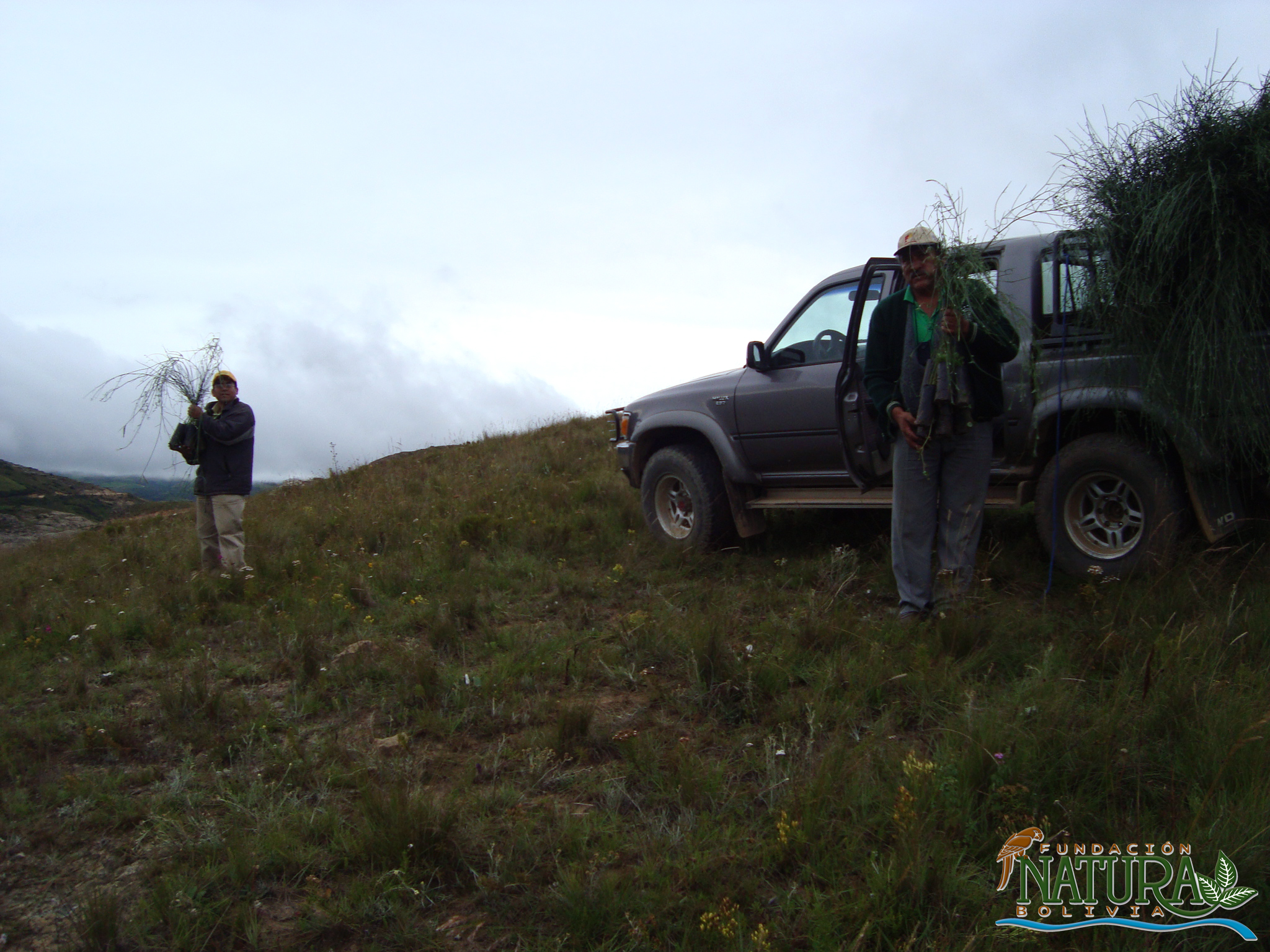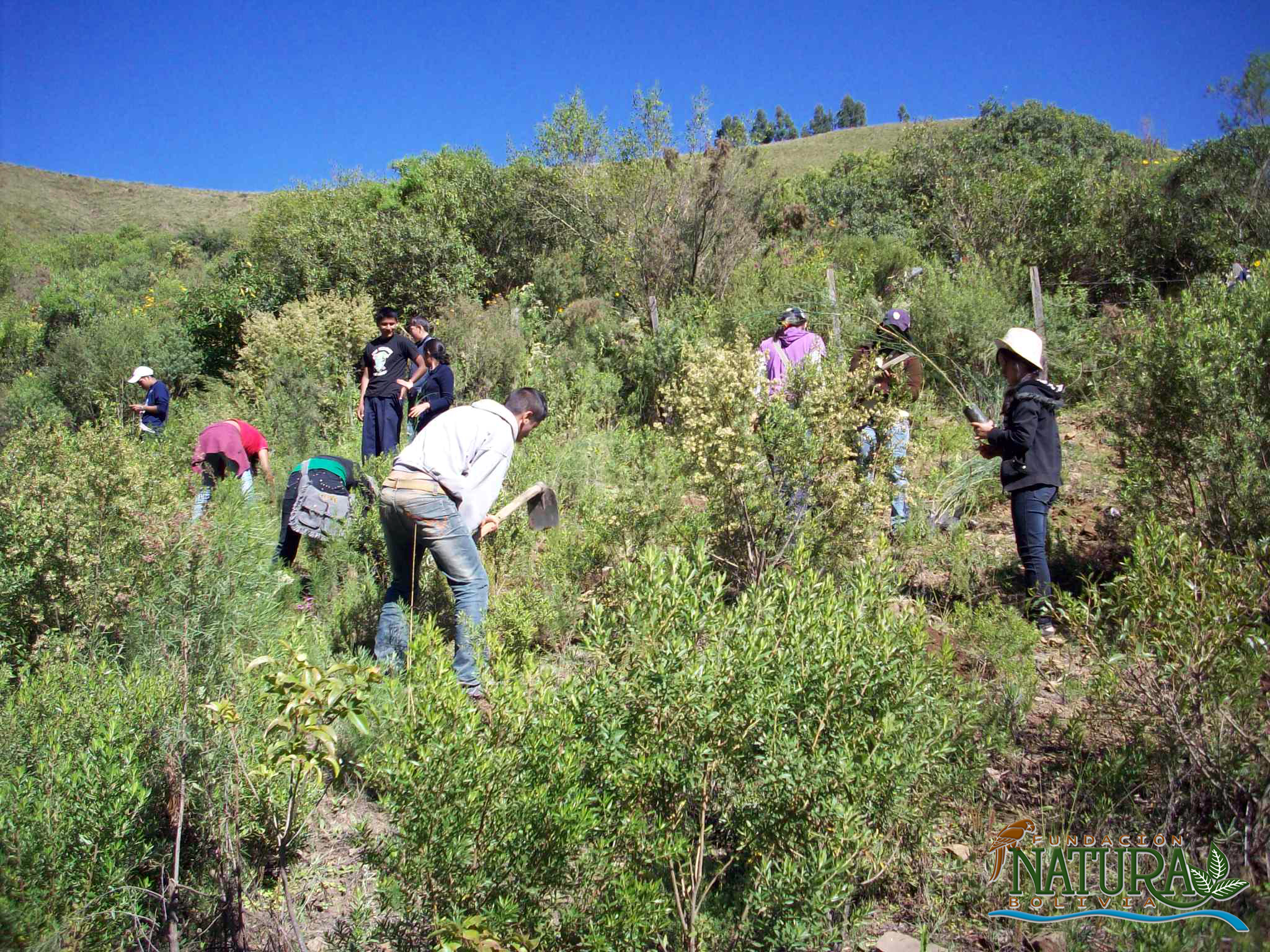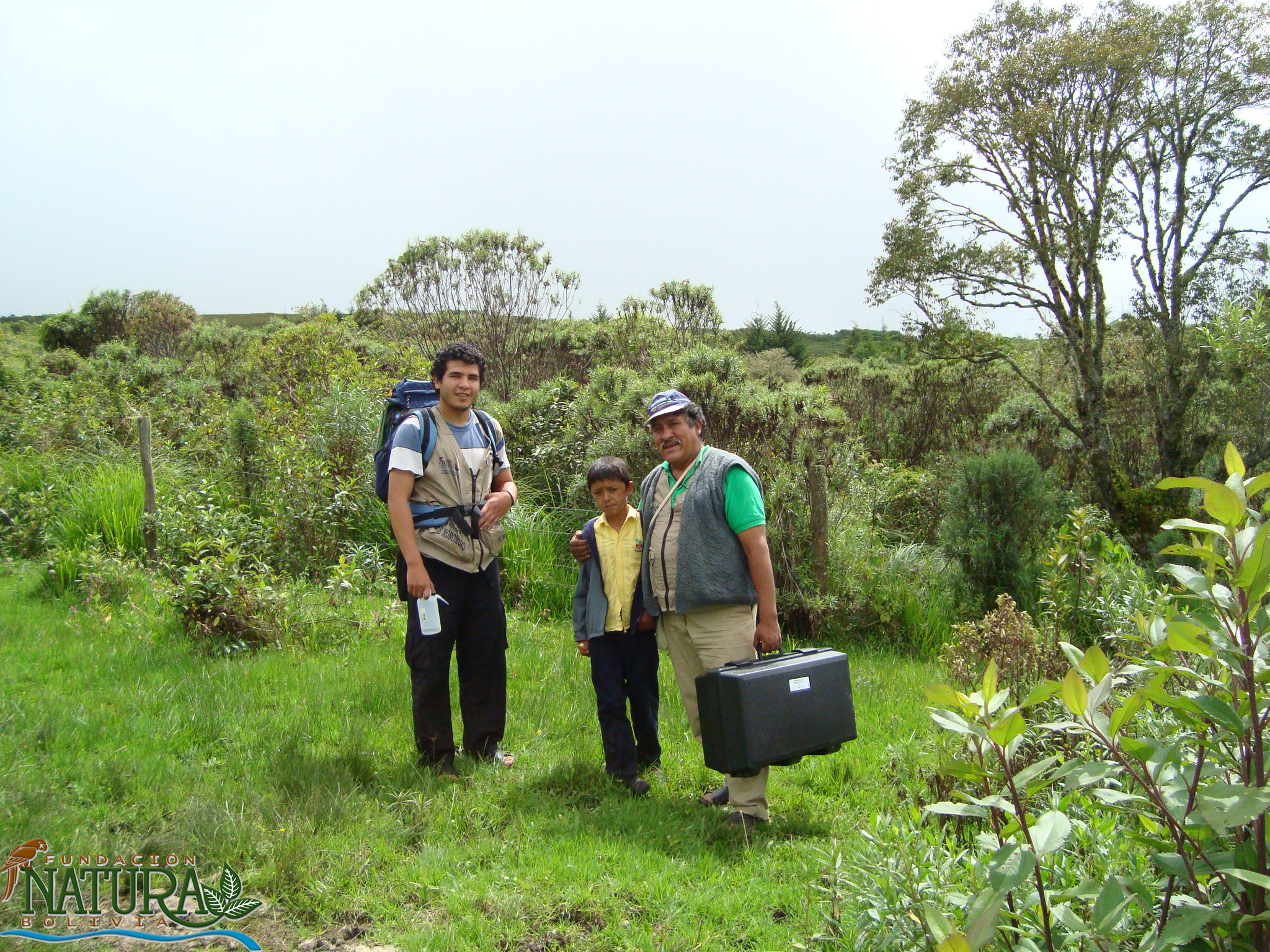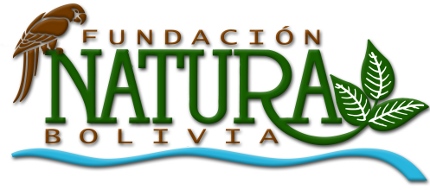CBA Bolivia: Knowledge and Tools for Sustainable Management of Water and Soils in Moro Moro (Natura)
Project Overview
In the municipality of Moro Moro, Santa Cruz Department, Bolivia, climate change impacts are already becoming apparent. Livelihoods are primarily agricultural and pastoral, and baseline environmental challenges include serious deforestation and soil degradation on the steeply sloped pastures and farmlands. In addition to threatening agricultural productivity and farmer livelihoods, soil degradation and deforestation have serious implications for water quality and quantity for populations living downstream.
This Community-Based Adaptation project targets community awareness and adaptive capacity through an aggressive outreach and training component on sustainable forestry and resource management to protect native species, soils, and ecosystem services (flood, erosion, and landslide protection) from climate change risks. Lessons learned will be shared with neighboring municipalities.
* This project is part of Bolivia's Community-Based Adaptation portfolio. *
Project Details
This project will focus on the municipality of Moro Moro in Santa Cruz Department, Bolivia. Moro Moro is located in Bolivia’s “warm valleys” – an area of transition between the western high plains and the eastern lowlands. The area is somewhat dry, with an average precipitation between 600 and 700 mm/yr, and a distinct rainy and dry season. Temperature is largely determined by altitude. Livelihoods are primarily agricultural and pastoral, and baseline environmental challenges include serious deforestation and soil degradation on the steeply sloped pastures and farmlands. In addition to threatening agricultural productivity and farmer livelihoods, soil degradation and deforestation has serious implications for water quality and quantity for populations living downstream.
Climate change impacts are already becoming apparent in this part of Bolivia. Projected impacts include increasing temperatures, increasingly intense yet erratic rainfall, and more marked seasonality – in turn increasing risks of both floods and droughts. These pressures will worsen baseline land degradation pressures, and threaten to undermine other work on water and soil management being done in the region by the proponent and by its partners in IUCN and UNDP-Bolivia, which focus on integrated water resource management through an environmental services payment scheme. Absent adaptation components, these measures will not be sustainable.
This Community-Based Adaptation (CBA) project will compliment baseline activities by reforesting key hydrological capture zones and areas at risk from increasing erosion pressures. The project will also directly target community awareness and adaptive capacity through an aggressive outreach and training component, while sharing lessons with neighboring municipalities.
Key Results and Outputs
Outcome 1: Local knowledge regarding natural resources and changing climate used to inform municipal planning
Through use of participatory processes, develop a community- and science-informed plan for local-level adaptation (Output 1.1), including the compilation of information on community perceptions of climate change (Output 1.2).
Outcome 2: Establish local monitoring system for principal water sources
Execute physical and chemical analysis of local water flow parameters on the Moro Moro river (Output 2.1), as well as the installation of an automated climate measurement station (Output 2.2). Train community members in monitoring and analysis technologies (Output 2.3) in order to produce systematized information on community-based climate measurements (Output 2.4).
Outcome 3: Climate change adaptation practices developed
Afforest/reforest riparian fringes and non-vegetated land to minimize contamination, sedimentation and flood erosion risks (Output 3.1), while also protecting areas of sediment production (Output 3.2). Develop a plan to include private lands within adaptation frameworks through an environmental services payment scheme (Output 3.3).
Outcome 4: Climate change risk management integrated into municipal policy
Bring awareness of climate change risks to local government stakeholders (Output 4.1) and municipal residents (including children and youth) through workshops, short courses, and a student competition (Output 4.2). Bring consideration of climate change risks and adaptation to local and regional policies through a regional workshop on lessons learned from the Moro Moro project (Output 4.3).
Reports and Publications
Project Brief / Fact Sheet
PIFs
Assessments and Background Documents
Bolivia Second National Communication, 2009 (English)
Bolivia Second National Communication, 2009 (Spanish)
Monitoring and Evaluation
Monitoring and evaluation for community-based adaptation is a new field, and the CBA project is piloting innovative approaches to evaluating the success of locally-driven adaptation projects, and generating lessons to inform ongoing practice.
Key considerations in M&E for CBA include:
- Grounding M&E in the local context: M&E for CBA should avoid overly rigid frameworks, recognizing community heterogeneity and maintaining local relevance
- Capturing global lessons from local projects: CBA projects are highly contextualized, but lessons generated should be relevant to stakeholders globally
- Incorporation of both quantitative and qualitative indicators: to ground projects in tangible changes that can be objectively evaluated, and to capture lessons and case studies for global dissemination
To these ends, the CBA project uses three indicator systems: the Vulnerability Reduction Assessment, the Small Grants Programme Impact Assessment System, and the UNDP Climate Change Adaptation Indicator Framework.
The Vulnerability Reduction Assessment (VRA)
The VRA is a question-based approach with the following aims:
- To make M&E responsive to community priorities
- To use M&E to make projects more accountable to local priorities
- To make M&E capture community ideas and local knowledge
- To gather community-level feedback to guide ongoing project management
- To generate qualitative information
- To capture lessons on specific issues within community-based adaptation
- To generate case studies highlighting adaptation projects
The VRA follows UNDP's Adaptation Policy Framework, and is measured in a series of meetings with local community stakeholders. In these meetings, locally-tailored questions based on standard VRA questions/indicators are posed, and the community assigns a numerical score on a 1-10 scale for each question. Progress is evaluated through changes in scores over the course of implementation, as well as through qualitative data collected in community discussions surrounding the exercise.
UNDP has developed a Users Guide to the VRA (Espanol) (Francais) as a tool to assist practitioners to conceptualize and execute VRA measurements in the context of CBA projects.
The SGP Impact Assessment System (IAS)
The CBA, being a project of the GEF Strategic Priority on Adaptation, aims to increase the resilience of ecosystems and communities to the impacts of climate change, generating global environmental benefits, and increasing their resilience in the face of climate change impacts. To this end, the CBA projects use the SGP's impact assessment system for monitoring achievements in GEF focal areas (focusing primarily on biodiversity and sustainable land management).
The IAS is composed of a number of quantitative indicators which track biophysical ecosystem indicators, as well as policy impact, capacity development and awareness-building.
UNDP Climate Change Adaptation Indicator Framework
CBA projects also track quantitative indicators from UNDP's adaptation indicator framework, corresponding to the thematic area on natural resources management. More information on UNDP's indicator framework can be found on the UNDP climate change adaptation monitoring and evaluation website.
* This description applies to all projects implemented through UNDP's Community-Based Adaptation programme. Specific details on this project's M&E will be included here as they become available. *
